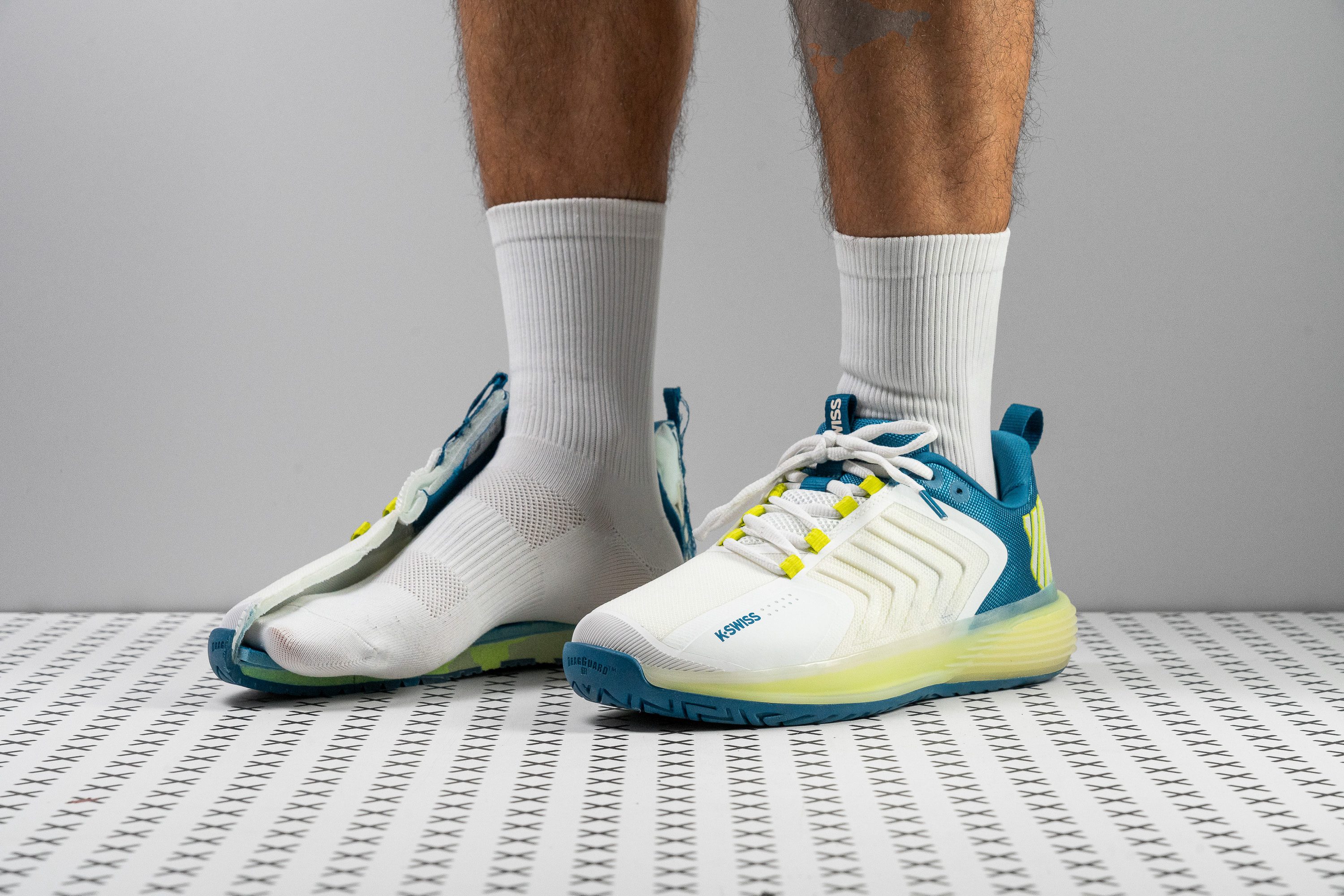Our verdict
- Top pick in best tennis shoes
- Top pick in best plantar fasciitis tennis shoes
Pros
- Abundant shock absorption
- Great lateral stability and support
- Superb outsole traction
- Highly durable outsole
- Secure lockdown
Cons
- Static unresponsive ride
- Upper could be more durable
- Lacks breathability
Audience verdict
Comparison
The most similar tennis shoes compared
+ + Add a shoe | |||||
|---|---|---|---|---|---|
| Audience score | 85 Great! | 86 Great! | 79 Good! | 91 Superb! | |
| Price | $150 | $135 | $150 | $150 | |
| Shoe type | All CourtHard Court | All CourtHard Court | All CourtHard Court | All CourtHard Court | |
| Shock absorption | High | - | High | Low | |
| Energy return | Moderate | - | High | Low | |
| Traction | High | - | Moderate | Moderate | |
| Construction | Stability | Stability | Stability | Stability | |
| Breathability | Moderate | Warm | Moderate | Moderate | |
| Weight lab | 14 oz / 397g | 12.9 oz / 367g | 13.3 oz / 376g | 13.9 oz / 393g | |
| Drop lab | 10.6 mm | 9.1 mm | 10.9 mm | 10.9 mm | |
| Width / fit | Medium | Medium | Medium | Medium | |
| Toebox width | Medium | Medium | Medium | Narrow | |
| Size | - | True to size | - | True to size | |
| Midsole softness | Balanced | Balanced | Balanced | Firm | |
| Stiffness | Stiff | Stiff | Moderate | Moderate | |
| Torsional rigidity | Moderate | Moderate | Moderate | Stiff | |
| Heel counter stiffness | Stiff | Stiff | Stiff | Stiff | |
| Midsole width - forefoot | Average | Average | Average | Average | |
| Midsole width - heel | Narrow | Average | Wide | Average | |
| Outsole durability | Good | Decent | Good | Good | |
| Heel padding durability | Bad | Bad | Bad | Bad | |
| Heel stack lab | 30.9 mm | 29.1 mm | 31.0 mm | 32.5 mm | |
| Forefoot | 20.3 mm | 20.0 mm | 20.1 mm | 21.6 mm | |
| Insole thickness | Average | Thin | Thin | Average | |
| Removable insole | ✓ | ✓ | ✓ | ✓ | |
| Heel tab | Finger loop | None | None | None | |
| Toebox durability | Decent | Good | Decent | Good | |
| Outsole hardness | Soft | Average | Average | Average | |
| Outsole thickness | Average | Average | Average | Average | |
| Ranking | #19 Top 49% | #18 Top 47% | #31 Bottom 20% | #3 Top 8% | |
| Popularity | #26 Bottom 33% | #38 Bottom 2% | #17 Top 44% | #1 Top 3% |
Who should buy
The Ultrashot 3 is a great option to consider if:
- you are an intermediate/advanced player in search of a versatile shoe that does it all well
- you need more impact protection in the heel for comfort, longer matches, heel pain, or prior injuries
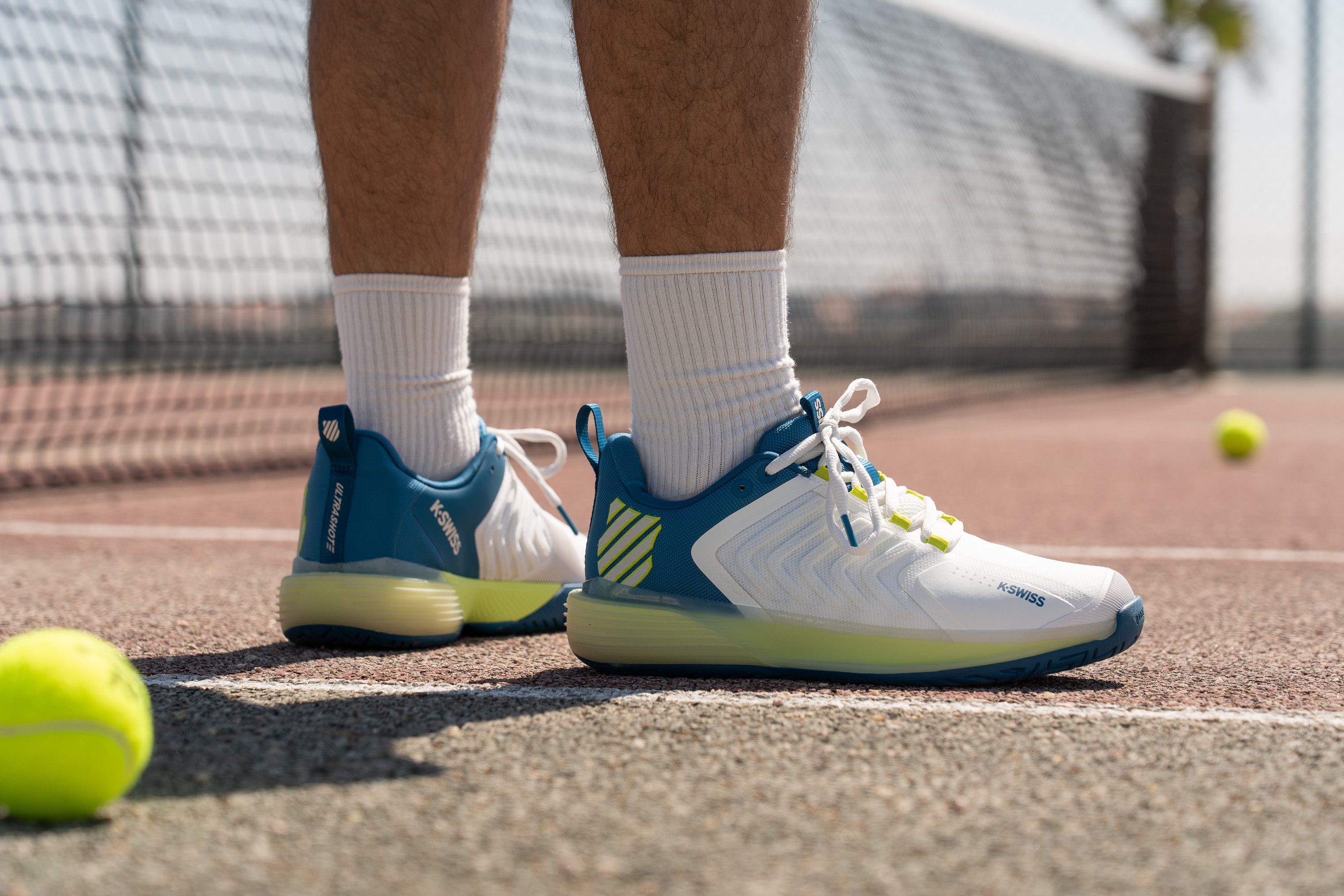
Who should NOT buy
Due to its low energy return, the Ultrashot 3 offers more of a grounded experience.
If you are looking for some bounce and responsiveness in an equally cushioned shoe, you might as well consider the Mizuno Wave Enforce Tour 2 or the Nike Zoom GP Challenge 1.
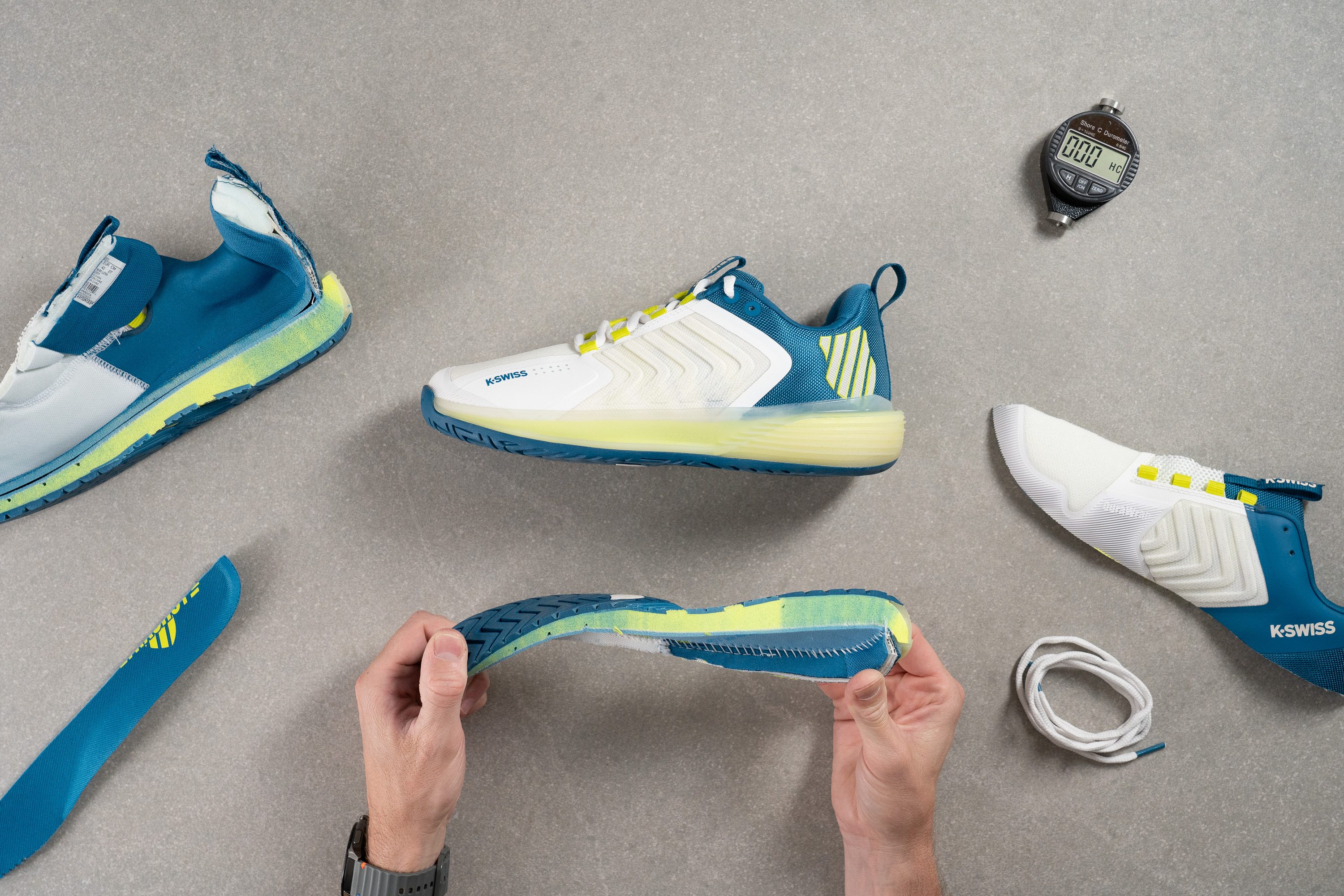
Cushioning
Shock absorption
Even though its midsole is not particularly thick, the Ultrashot 3 offers an impressive amount of impact protection underfoot!
The shock absorption of this K-Swiss shoe returned an above-average reading of 109 SA in the heel and a more standard measurement of 64 SA in the forefoot. But overall, it feels comfortably cushioned for a longer match, a heavier player, or someone dealing with foot or joint pain.
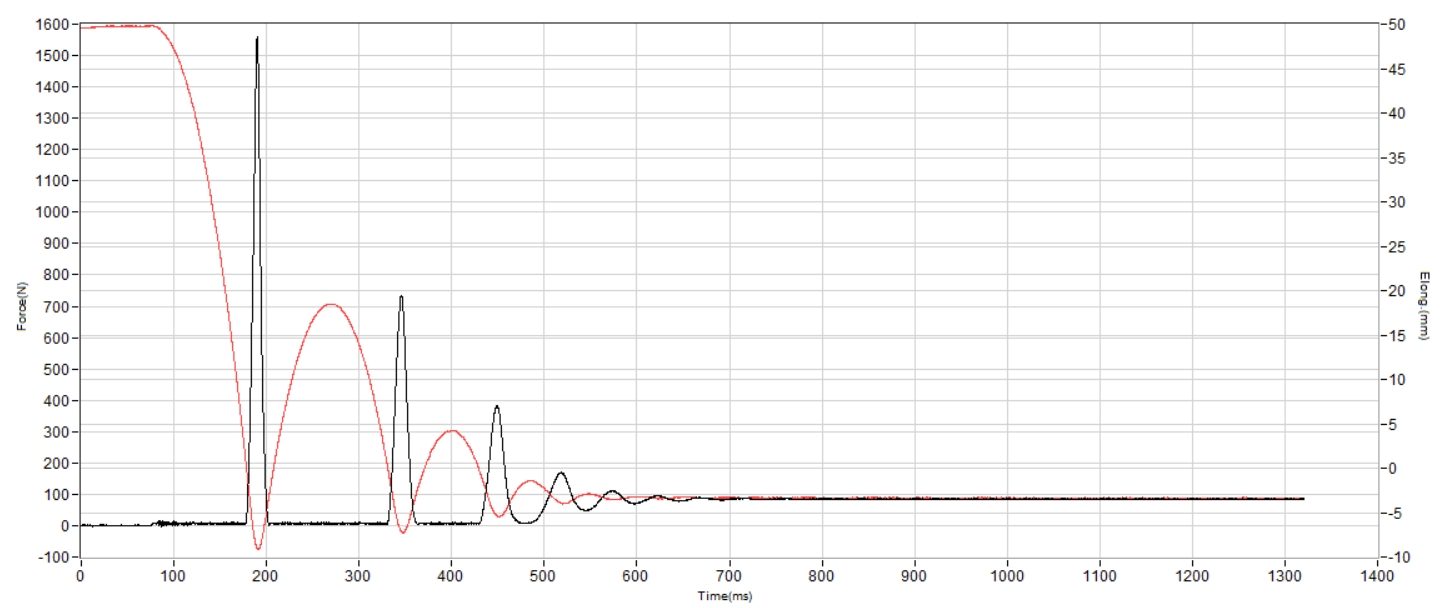
| Ultrashot 3 | 109 SA |
| Average | 99 SA |
Energy return
But we have to disagree with K-Swiss when they promise 'maximum energy return' in the Ultrashot 3.
Measuring the amount of force this shoe's midsole rebounds to the player, our machine recorded just a standard reading of 47.6% in the heel and a below-average one of 43.6% in the forefoot! This doesn't mean that the shoe feels dead and unresponsive, but it might be a 'meh' experience for players expecting some bounce and propulsiveness underfoot.
| Ultrashot 3 | 47.6% |
| Average | 48.8% |
Heel stack
The K-Swiss Ultrashot 3 comes with a standard stack height of 30.9 mm in the heel. It's hard to go wrong with this stack as it ensures great impact protection without disconnecting you from the court.
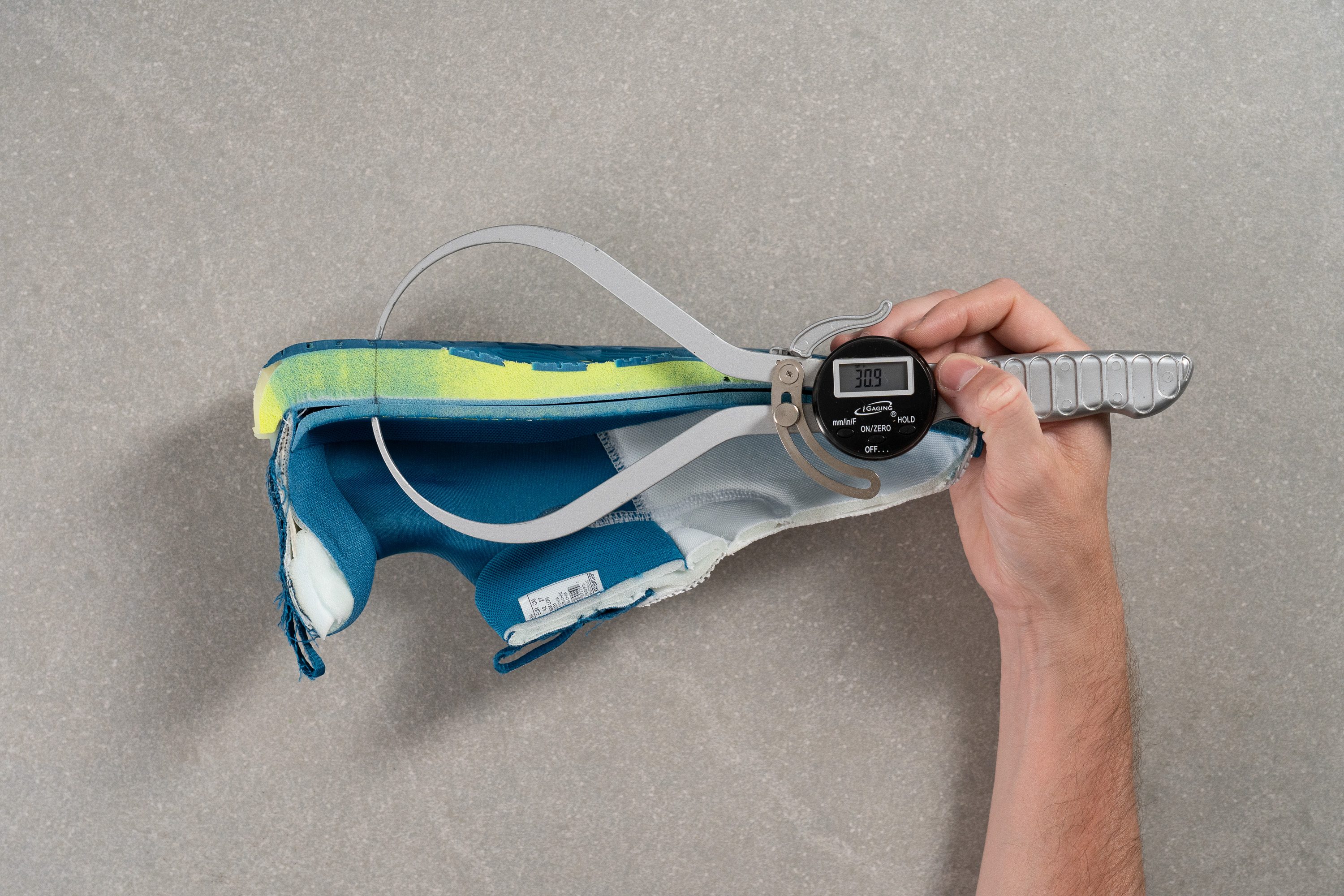
| Ultrashot 3 | 30.9 mm |
| Average | 29.2 mm |
Forefoot stack
The same is true for the shoe's forefoot stack of 20.3 mm, as it is on par with the category average.
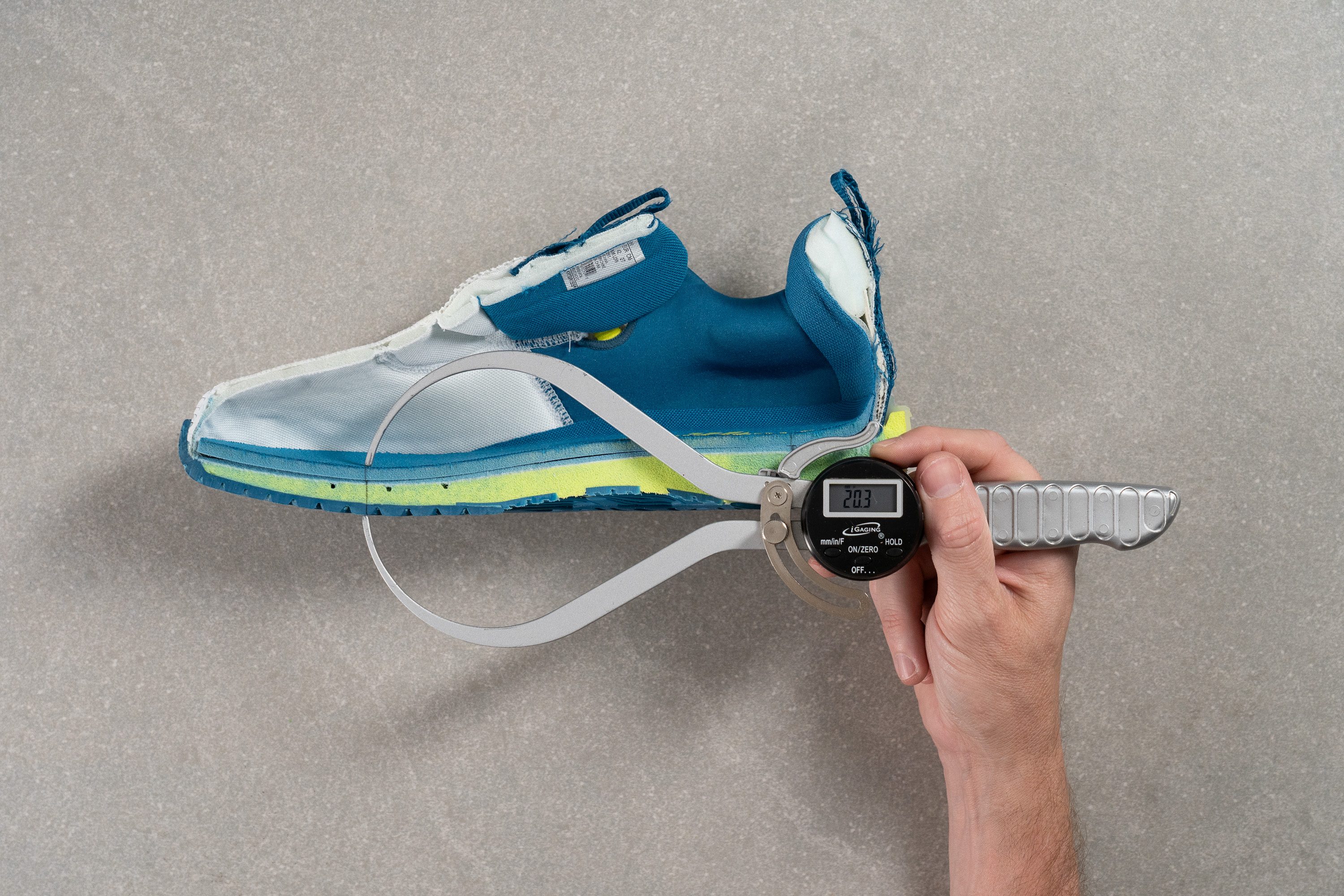
| Ultrashot 3 | 20.3 mm |
| Average | 19.5 mm |
Drop
Regular stack heights result in a regular heel-to-toe drop. At 10.6 mm, our heels were slightly raised, making it easier to stay on the toes and offering more cushioning for the heel.
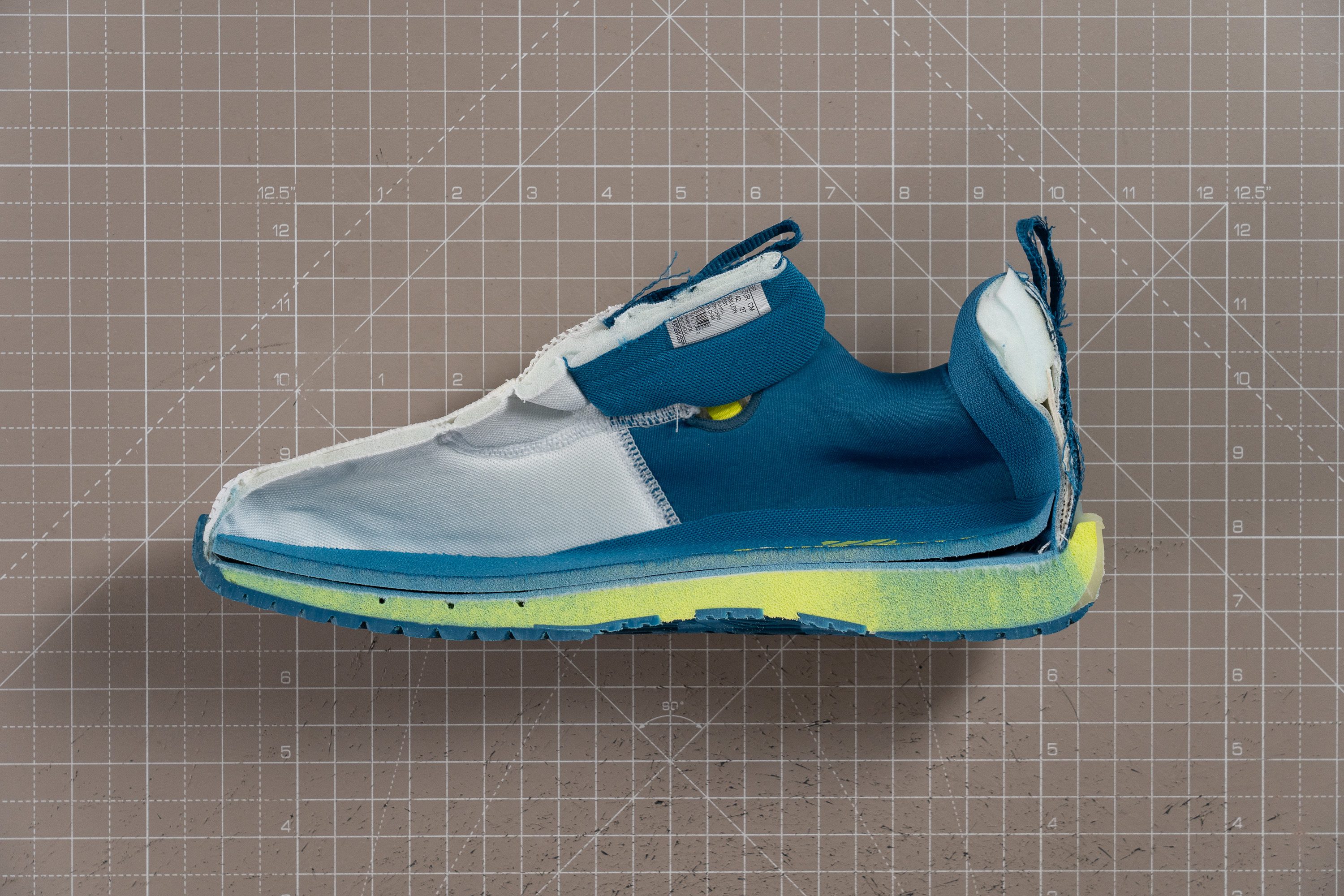
| Ultrashot 3 | 10.6 mm |
| Average | 9.7 mm |
Midsole softness
There are no complicated cushioning technologies in the K-Swiss Ultrashot 3, but it gets the job done amazingly well!
A full-length Surge 7.0 foam used in the shoe's midsole returned a fairly soft durometer reading of 22.2 HA.
But don't worry, it doesn't feel uncontrollably plush because it is encased in a rigid translucent cage that stabilizes the ride.
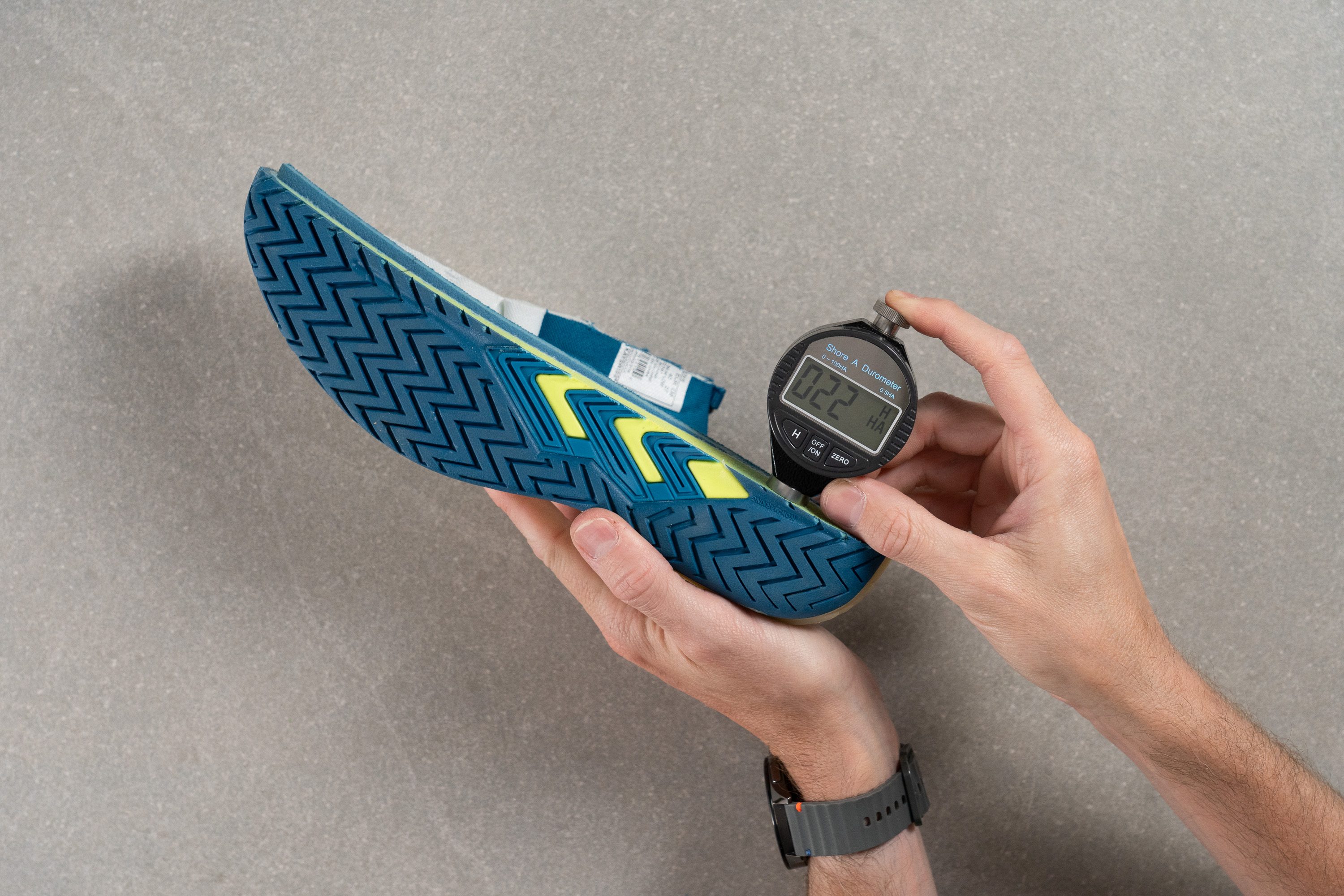
| Ultrashot 3 | 22.2 HA |
| Average | 28.1 HA |
Size and fit
Size
Width / Fit
Expect a snug fit in the Ultrashot 3. Especially if you are comparing it to another popular tennis shoe from K-Swiss, the Hypercourt Express 2.
Once our gel mold of the shoe's interiors had cooled off, we measured its widest part in the ball of the foot area at 90.2 mm. That's one of the narrowest readings we've recorded in a medium-width tennis shoe (men's US size 9).
Players with wide feet are very likely to feel cramped inside this K-Swiss shoe.
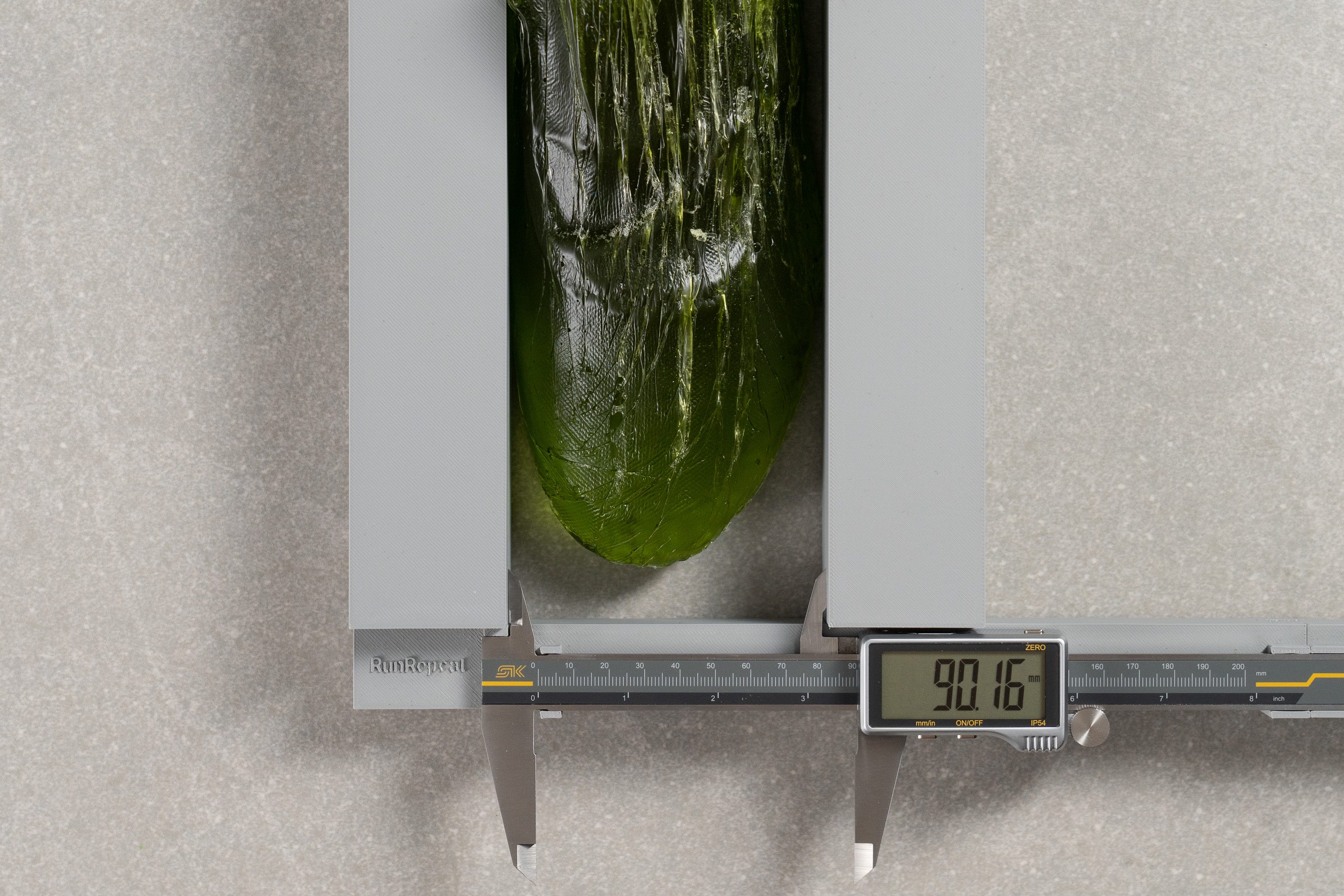
| Ultrashot 3 | 90.2 mm |
| Average | 92.9 mm |
Toebox width
The Ultrashot 3's toebox also turned out to be pretty close-fitting, with only 67.1 mm of width in the big toe area. It is definitely more of a narrow foot friendly tennis shoe.

| Ultrashot 3 | 67.1 mm |
| Average | 69.2 mm |
Toebox height
At least the shoe's vertical space is not as restrictive.
Measuring its toebox height at 27.6 mm, we found that it has a couple of extra millimeters that help to relax the fit a little bit.
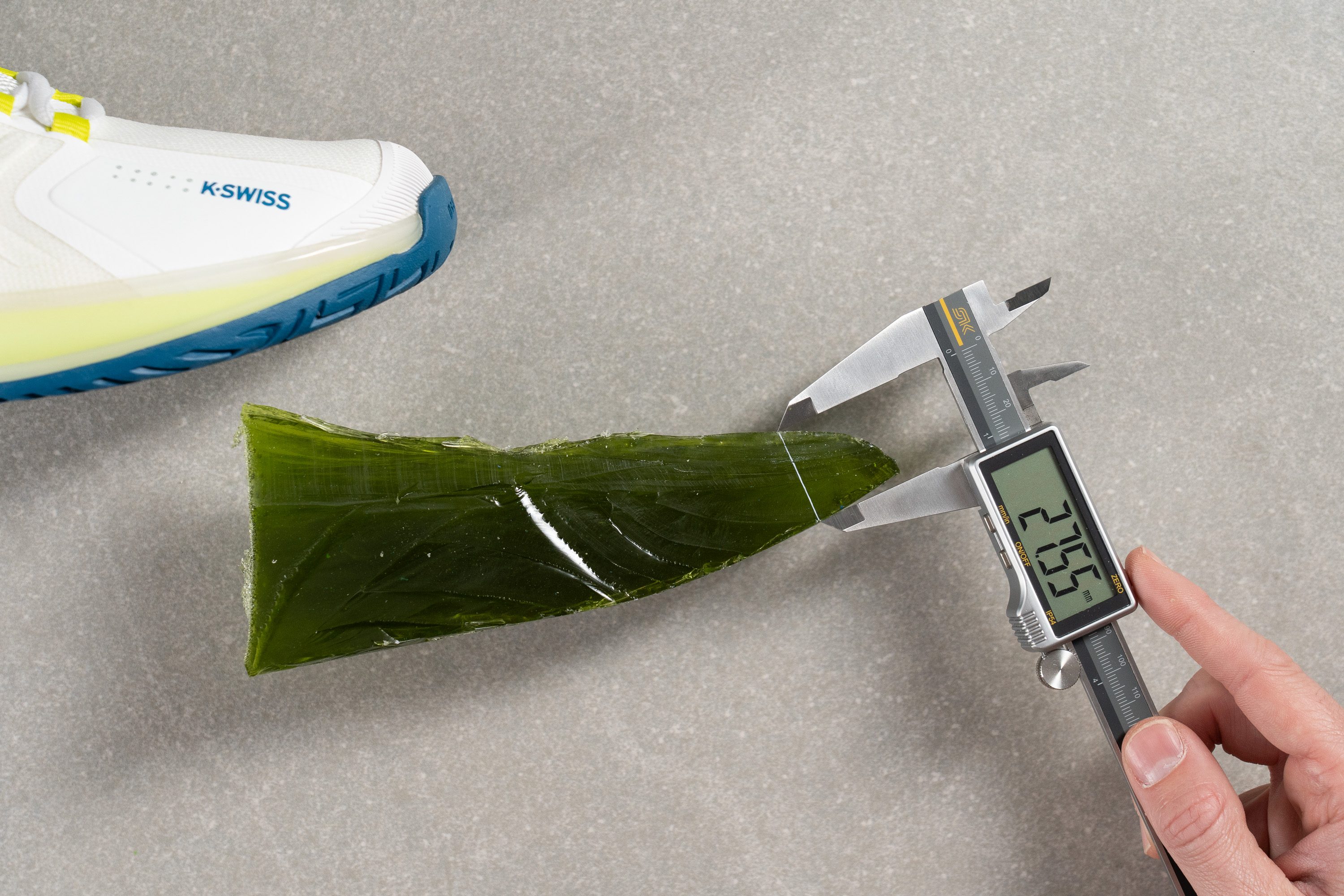
| Ultrashot 3 | 27.6 mm |
| Average | 25.1 mm |
Lacing
We were able to achieve a highly secure lockdown in the Ultrashot 3, as its eyelets are made of ribbons that stretch down to the base of the shoe. The laces themselves, however, looked disappointingly cheap.
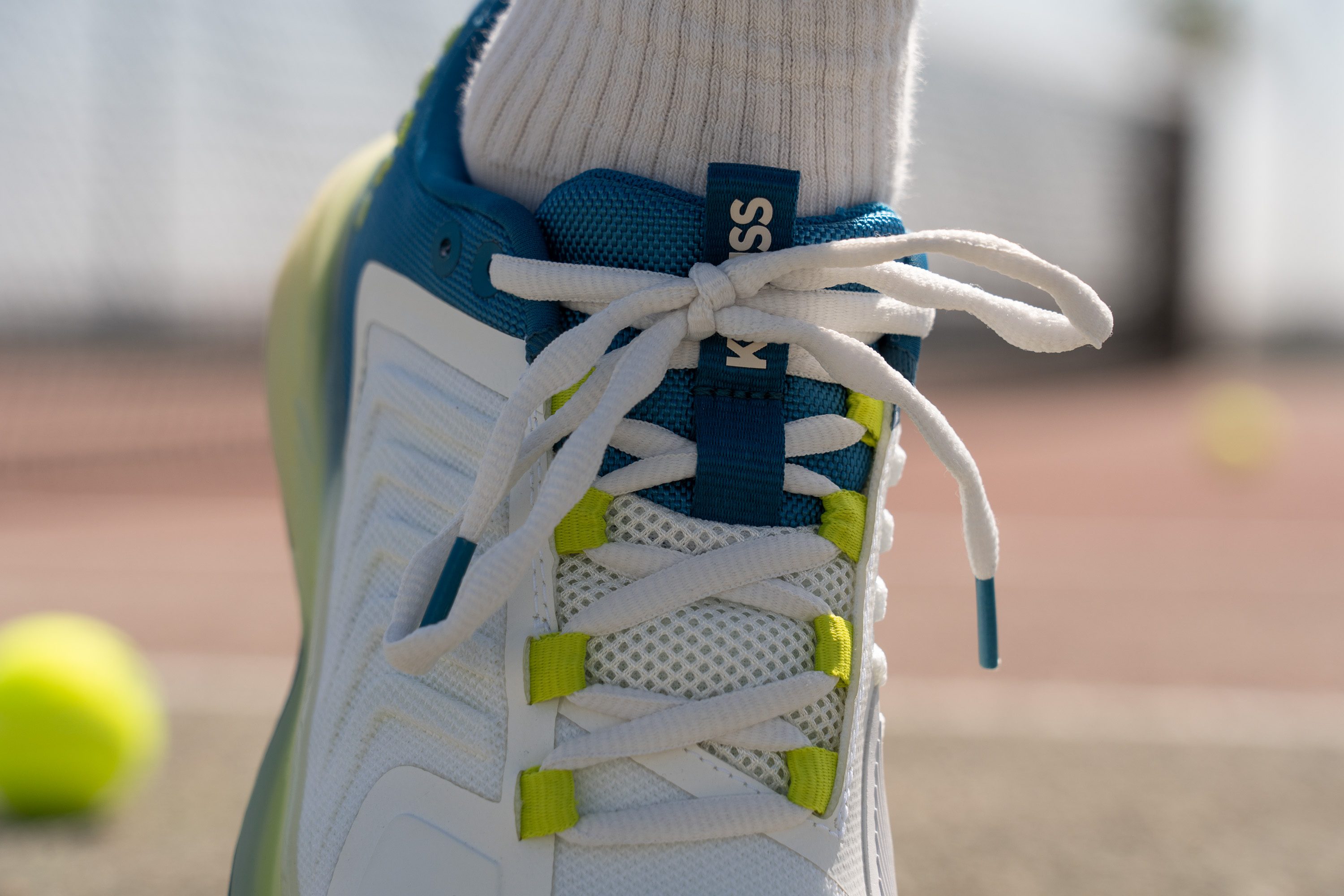
Traction / Grip
Forefoot traction
The sticky grip of this K-Swiss shoe is highly reliable for explosive and hard-stop footwork. Measuring the friction its outsole generates in the forefoot, we recorded a high coefficient of 0.86.
But even though its bite is extra strong, the Ultrashot 3 doesn't get in the way of some sliding either.
| Ultrashot 3 | 0.86 |
| Average | 0.76 |
Outsole design
The K-Swiss Ultrashot 3 features a thick herringbone pattern that gets flatter or sharper depending on the area to provide a good mix of grip and give.
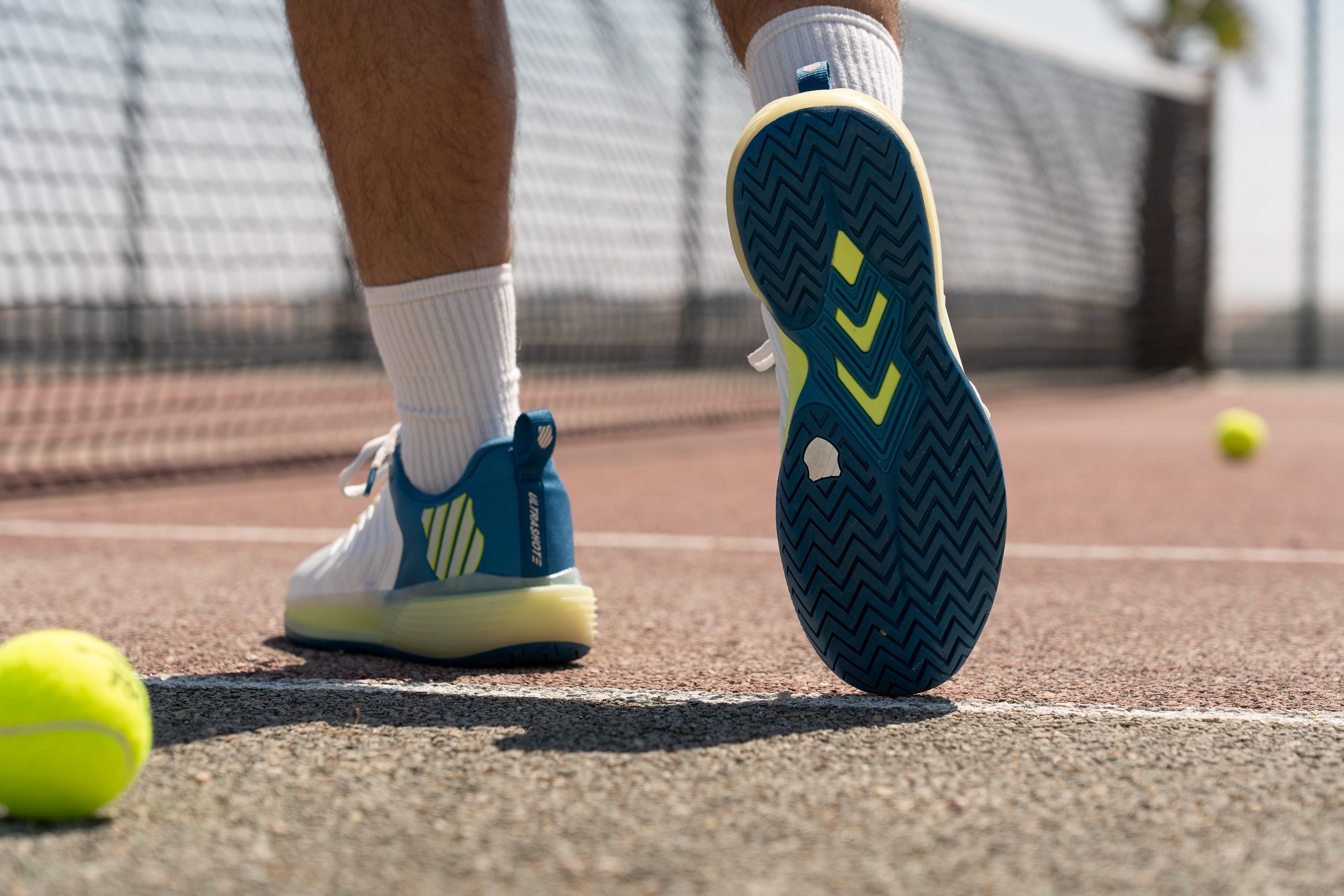
Flexibility / Stiffness
The Ultrashot 3 caters to players who prefer a more rigid response underfoot. It's not very maneuverable, but it feels structured and stable instead.
Even though its shank is limited only to the midfoot area, our flexibility test showed that the shoe's forefoot requires notably more force to bend by 30 degrees than the average tennis shoe. At 21.1N, it is one of the stiffest models we've tested, and a break-in period is to be expected as well.
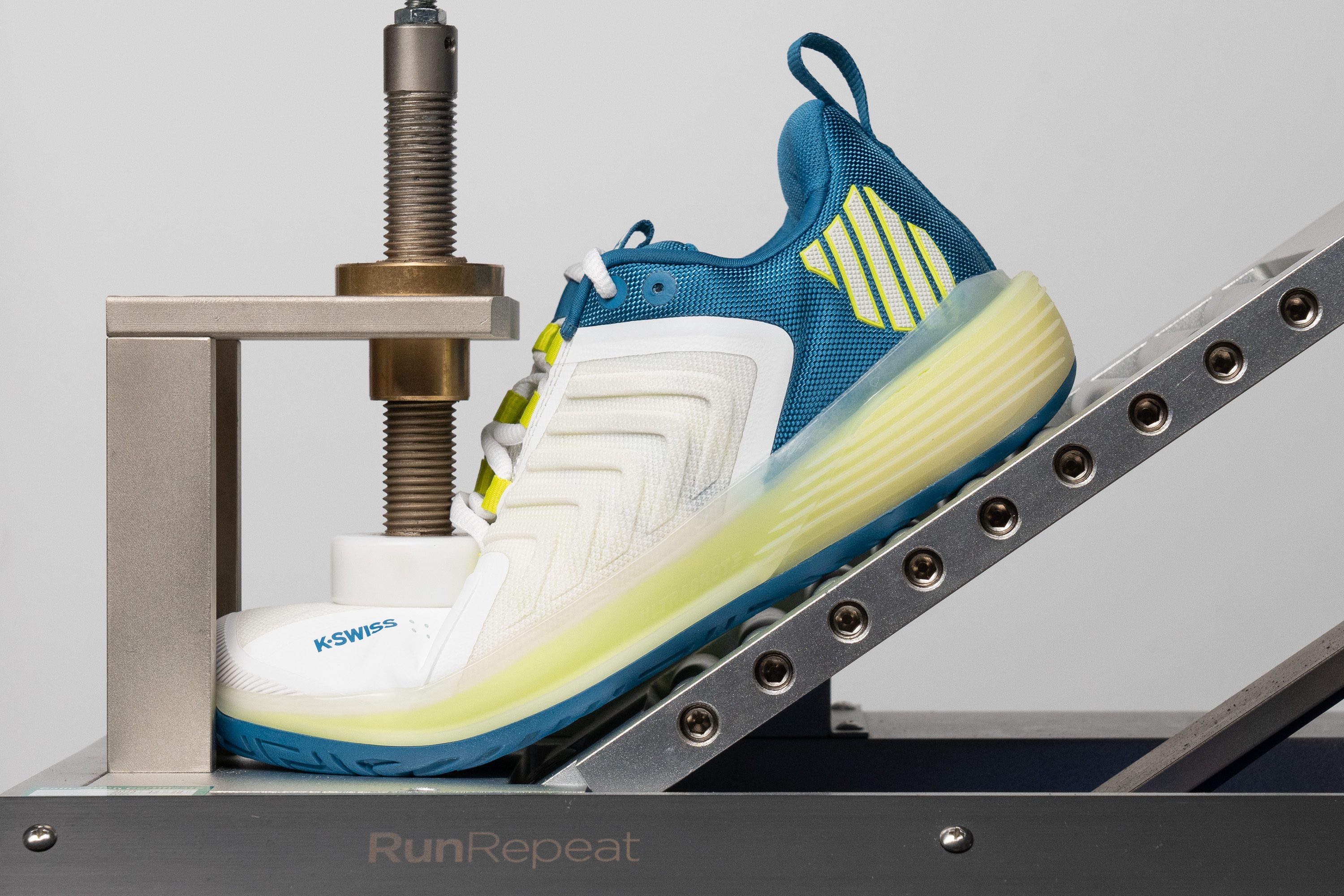
| Ultrashot 3 | 21.1N |
| Average | 16.6N |
Weight
Tipping the scale at 14.0 oz (397g) in a men's US size 9, the Ultrashot 3 is about an ounce heavier than the category average. But it's not because of some dead weight – we could feel the added comfort and stability that came with the extra grams.
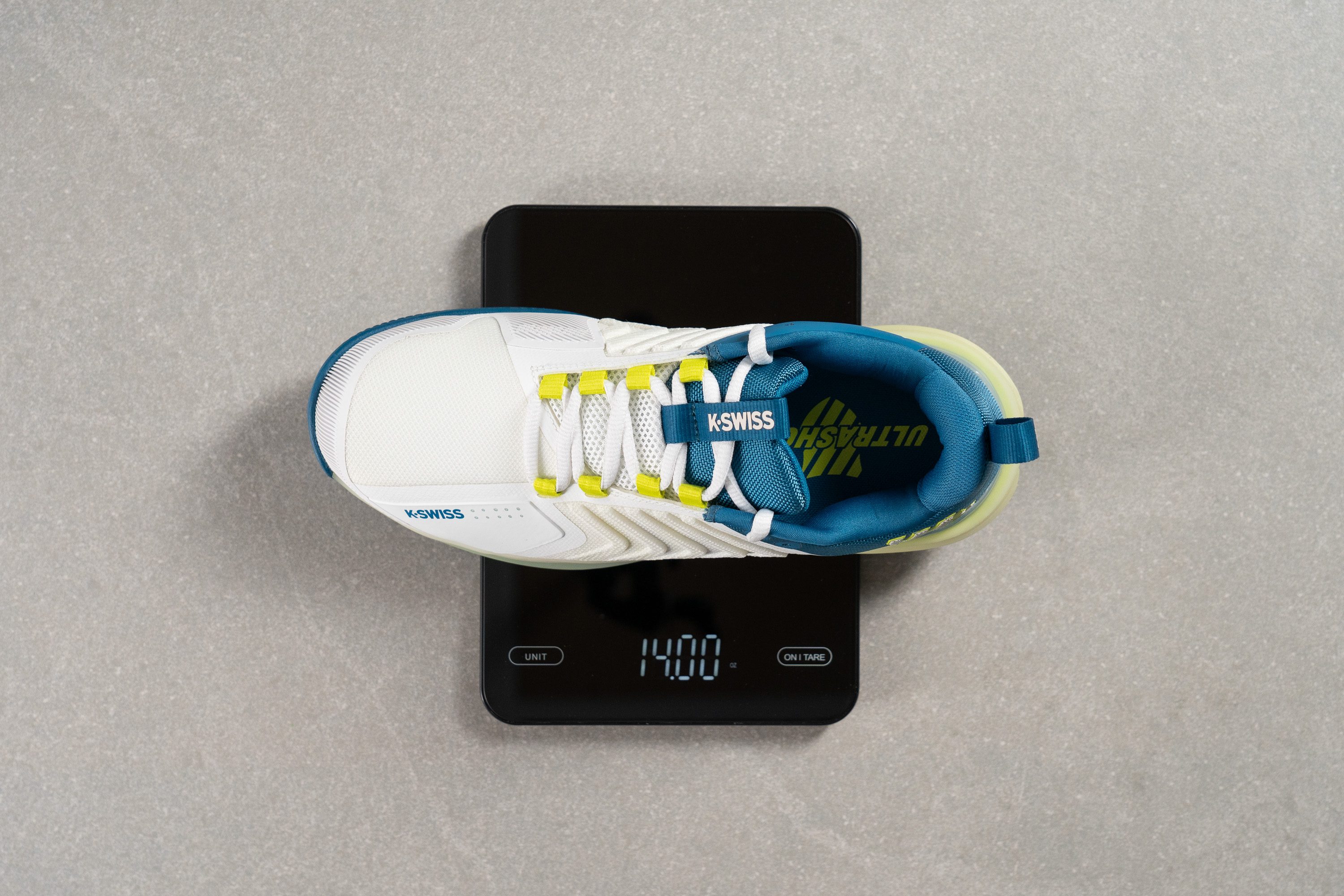
| Ultrashot 3 | 14.0 oz (397g) |
| Average | 12.8 oz (362g) |
Breathability
Don't expect much ventilation from the shoe's tightly woven upper fabric, as this material hardly expelled any smoke in our breathability test.
Scrutinising its upper textile under a microscope, the pores weren't clearly defined either.
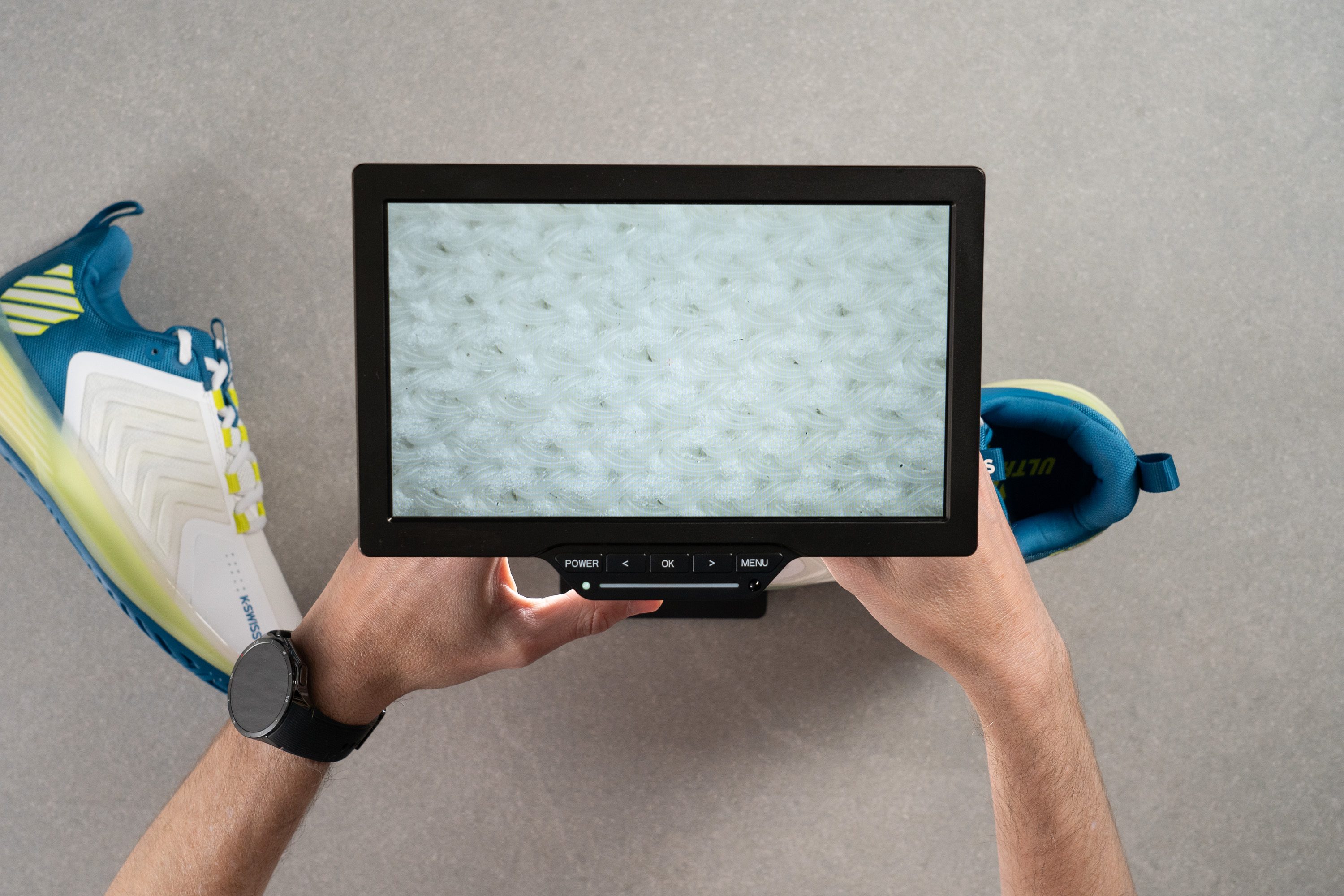
We found them to be blocked by tough, wire-like threads that added integrity and durability to the otherwise soft fabric.
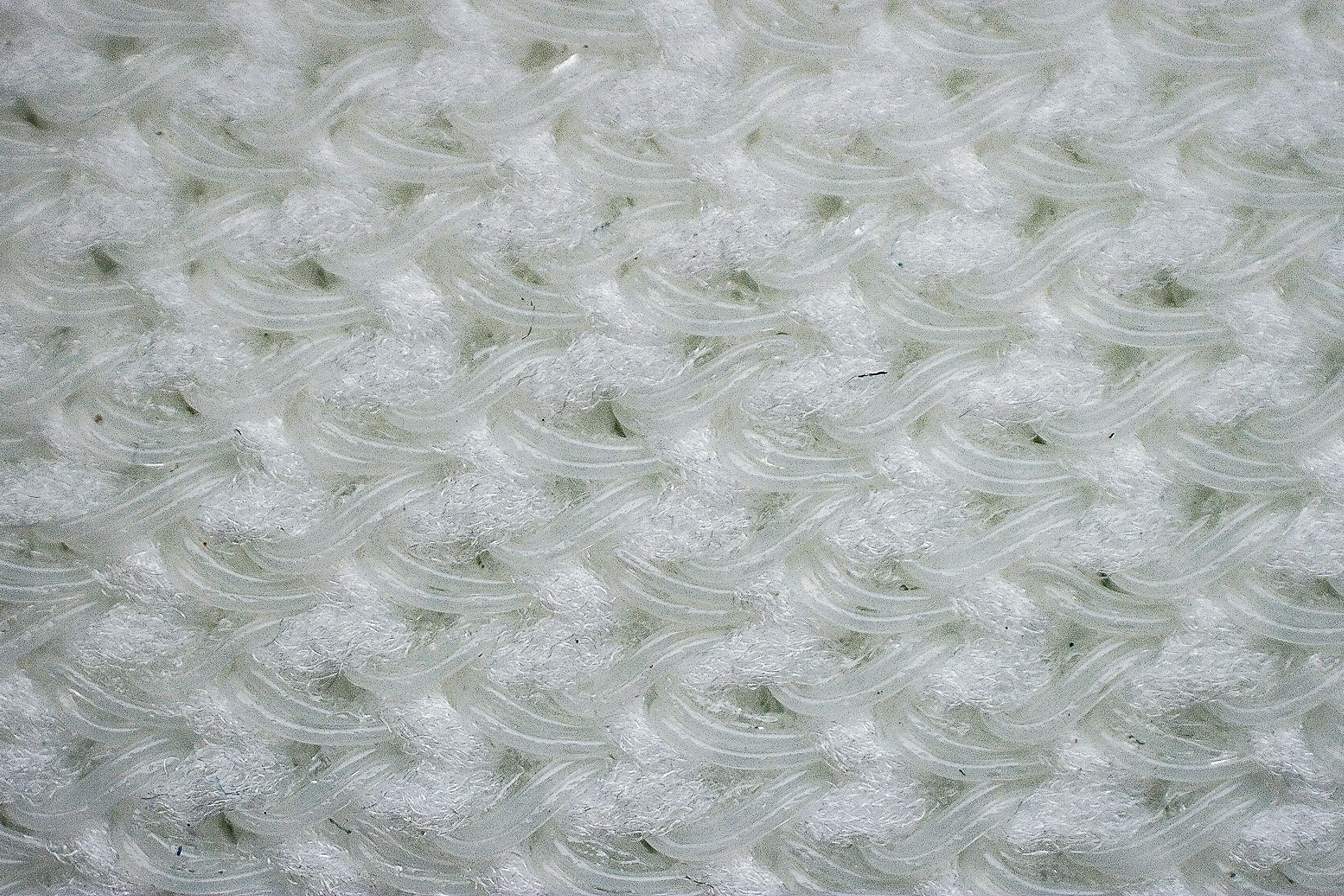
But because the Ultrashot 3 has some transparent areas on the sides, it's not a hopelessly toasty shoe either. A touch of airflow they offered bumped up our breathability score to 2 out of 5.
| Ultrashot 3 | 2 |
| Average | 3.2 |
Stability
Lateral stability test
The shoe's 360 Plantar Chassis, with a midfoot shank inside the midsole and a stiff cage around it, creates a highly supportive experience for moving aggressively from side to side.
While it's not on the same level of lateral support as the ASICS Gel Resolution or the Adidas Barricade, the Ultrashot 3 never made us feel as if rolling the ankle was even an option.
Torsional rigidity
With its stabilizing components being fairly moderate, the Ultrashot 3 also showed a little bit of give in our manual test. Thus, we rated its torsional rigidity as 4 out of 5.
| Ultrashot 3 | 4 |
| Average | 4.4 |
Heel counter stiffness
The shoe's heel counter, on the other hand, proved to be quite sturdy and structured, and refused to give in to our manual pressure. It created a very stiff cage for the heel and ankle, keeping the wobbles under control.
On a 1 to 5 stiffness scale, that's a clear 5/5 on our end.
| Ultrashot 3 | 5 |
| Average | 4.1 |
Midsole width - forefoot
Even though the Ultrashot 3 has defined outriggers on the sides, its midsole dimensions are pretty moderate. The widest part of its forefoot, for example, showed just a standard reading of 111.2 mm.
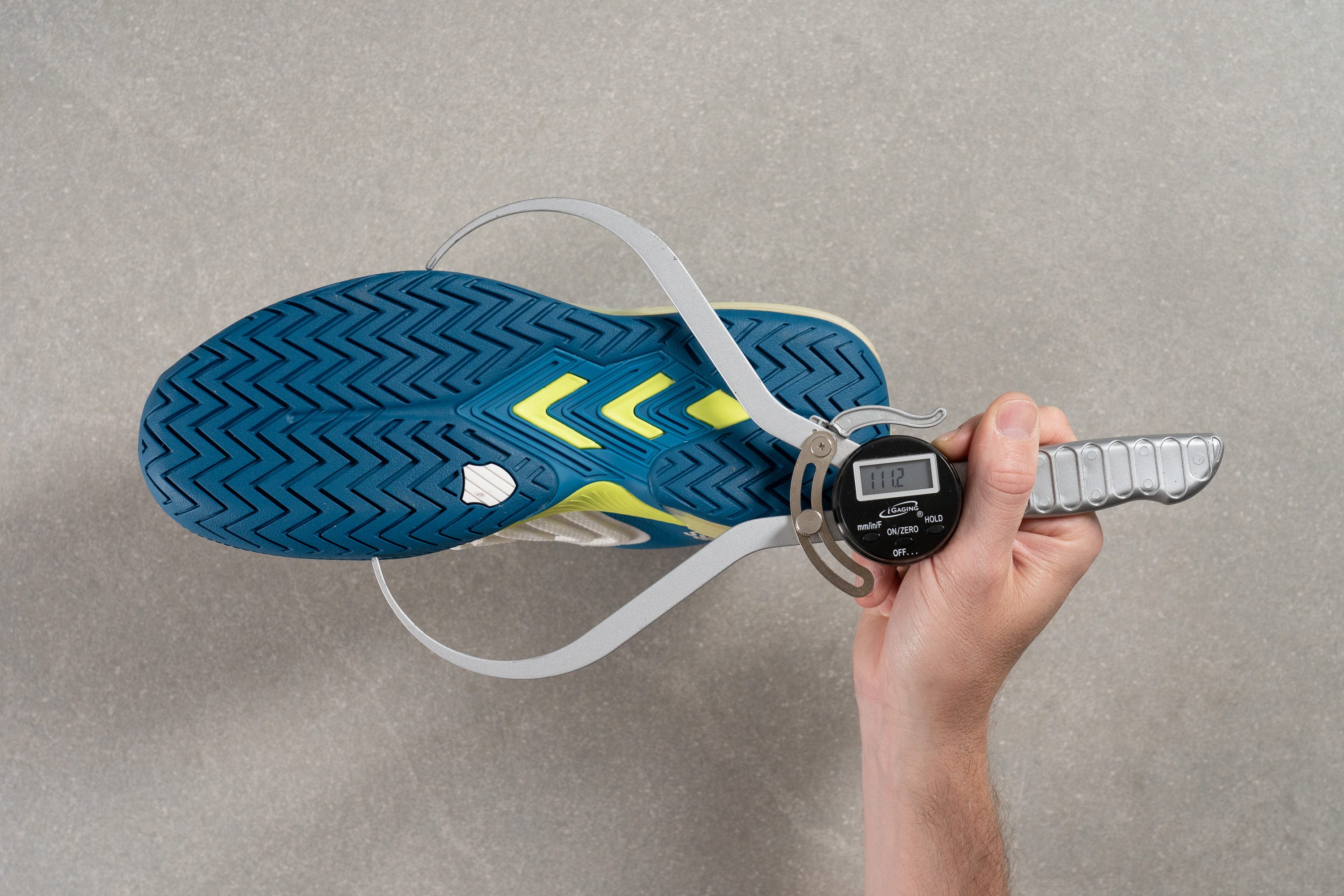
| Ultrashot 3 | 111.2 mm |
| Average | 111.9 mm |
Midsole width - heel
The same is true for the heel, where the widest area clocked in at a moderate 85.9 mm.
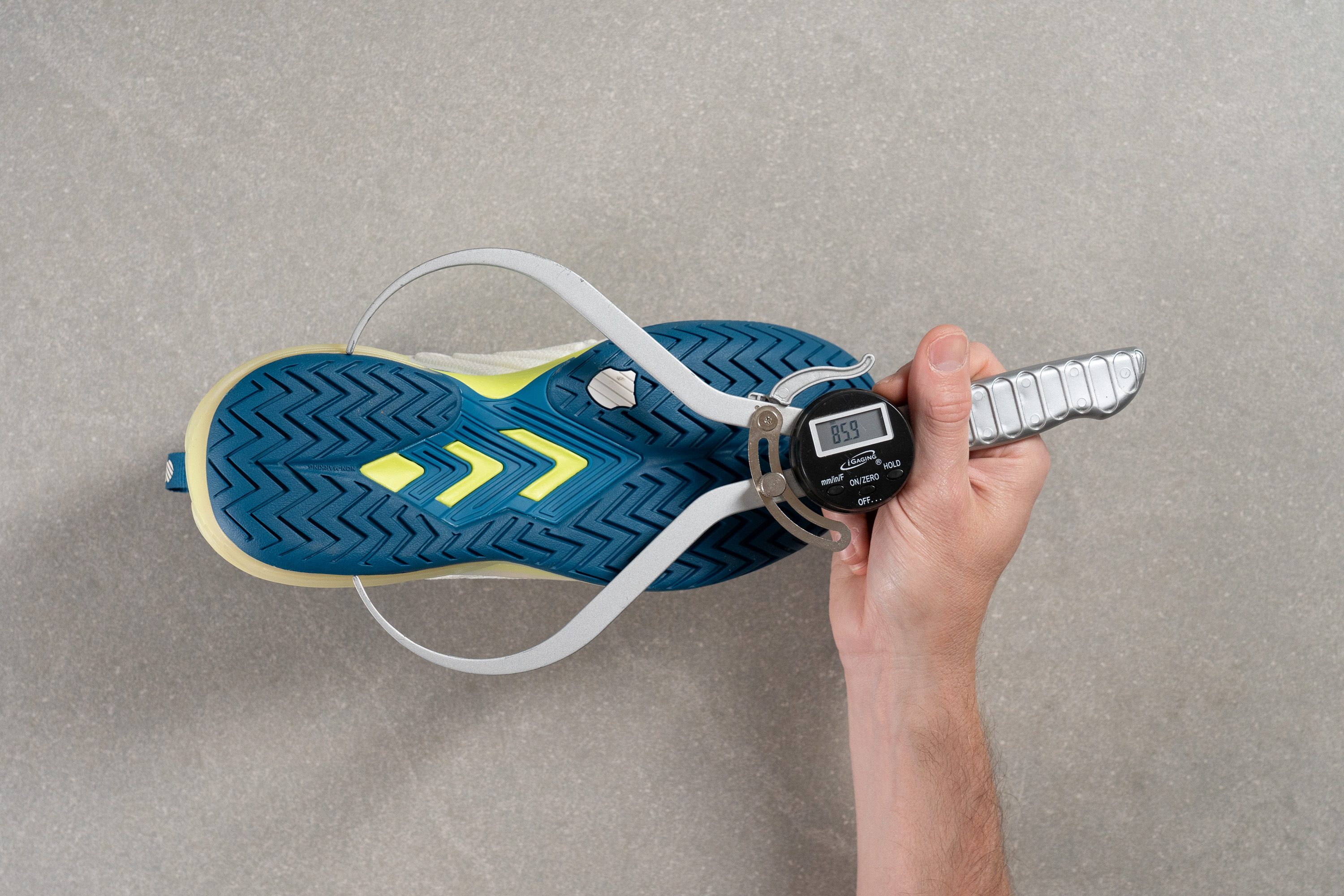
| Ultrashot 3 | 85.9 mm |
| Average | 89.6 mm |
Durability
Toe guard durability
If there is one area where the K-Swiss Ultrashot 3 left us wishing for more, it would be the shoe's upper durability.
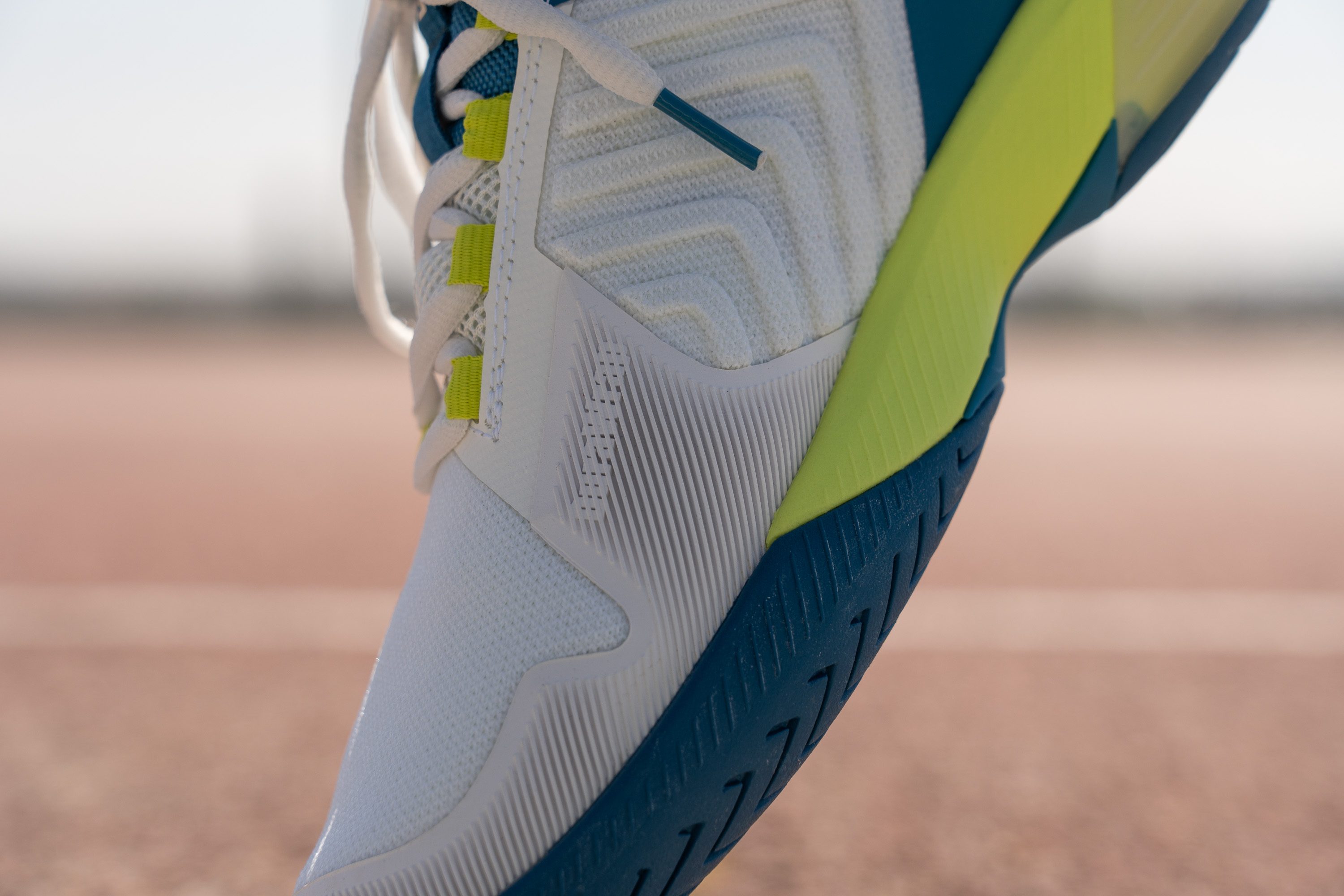
While the DuraWrap overlay on the inner side of the shoe helped to protect the upper fabric from tearing, it didn't hold up against the Dremel as strongly as the toe drag guards of some other premium tennis shoes we've tested.
Assessing the damage left by the tool, we couldn't rate the durability of this shoe part any higher than 3 out of 5.
| Ultrashot 3 | 3 |
| Average | 3.3 |
Toebox durability
The shoe's toebox also happens to be rather exposed, with protective layers covering the most high-wear areas only.
Our Dremel test confirmed that this fabric won't survive repeated encounters with hard court, and that's why we lowered the shoe's toebox durability score to 3 out of 5.
| Ultrashot 3 | 3 |
| Average | 3.7 |
Heel padding durability
We also believe that the Ultrashot 3's inner lining could be improved, as it failed to survive even our shortest 4-second durability test.
| Ultrashot 3 | 2 |
| Average | 3.3 |
Outsole durability
Fortunately, we don't have a single knock on the shoe's outsole durability, as it resisted our demanding 18-second drill at a high 10K RPM speed.
At 0.5 mm, the dent was barely measurable, making the shoe's outsole warranty feel redundant.
| Ultrashot 3 | 0.5 mm |
| Average | 0.8 mm |
Outsole thickness
And what about the shoe's outsole thickness? It is nice and thick at 4.2 mm.
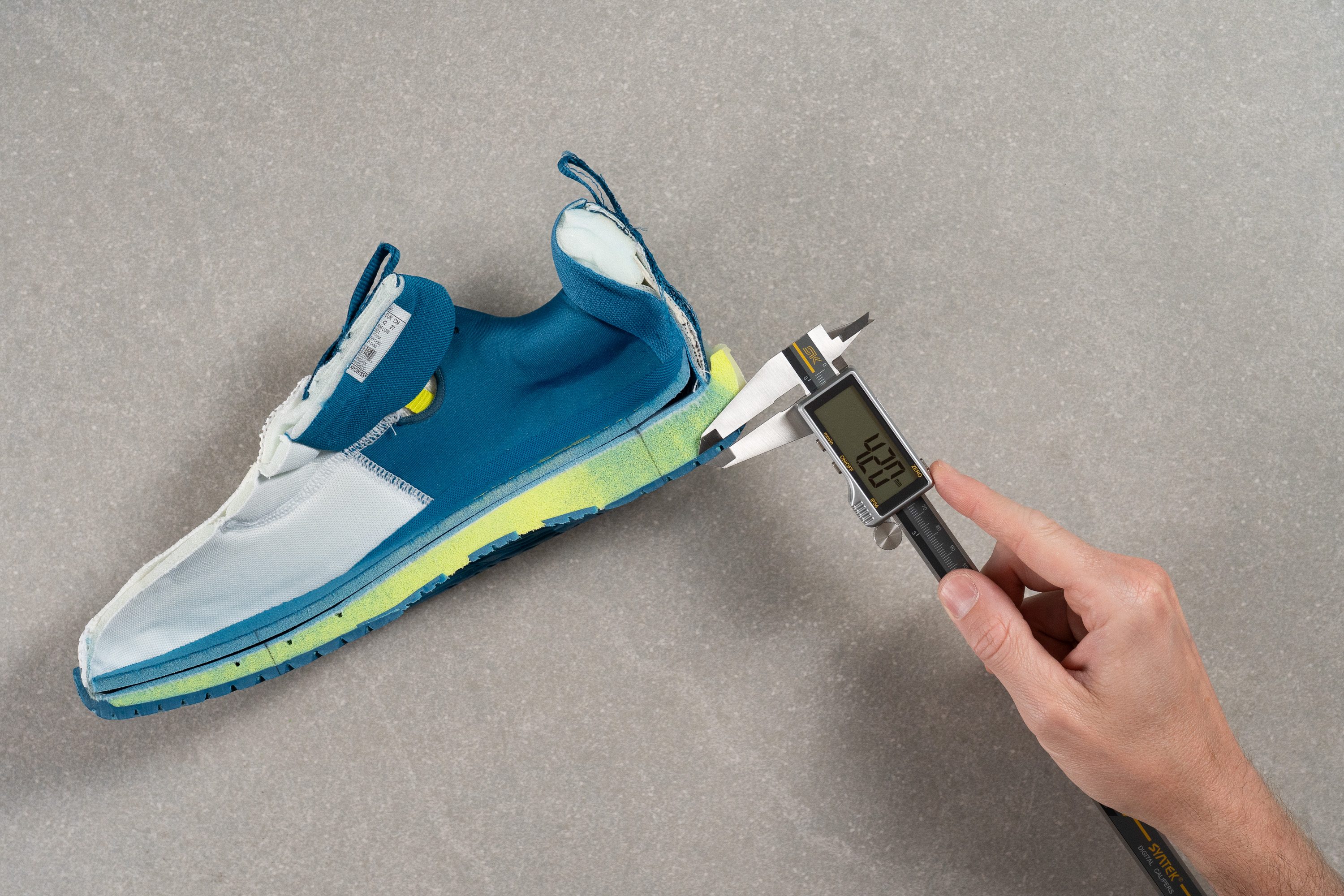
| Ultrashot 3 | 4.2 mm |
| Average | 4.2 mm |
Misc
Insole thickness
A well-padded 4.9 mm thick insole adds comfort and cushioning to the Ultrashot 3.
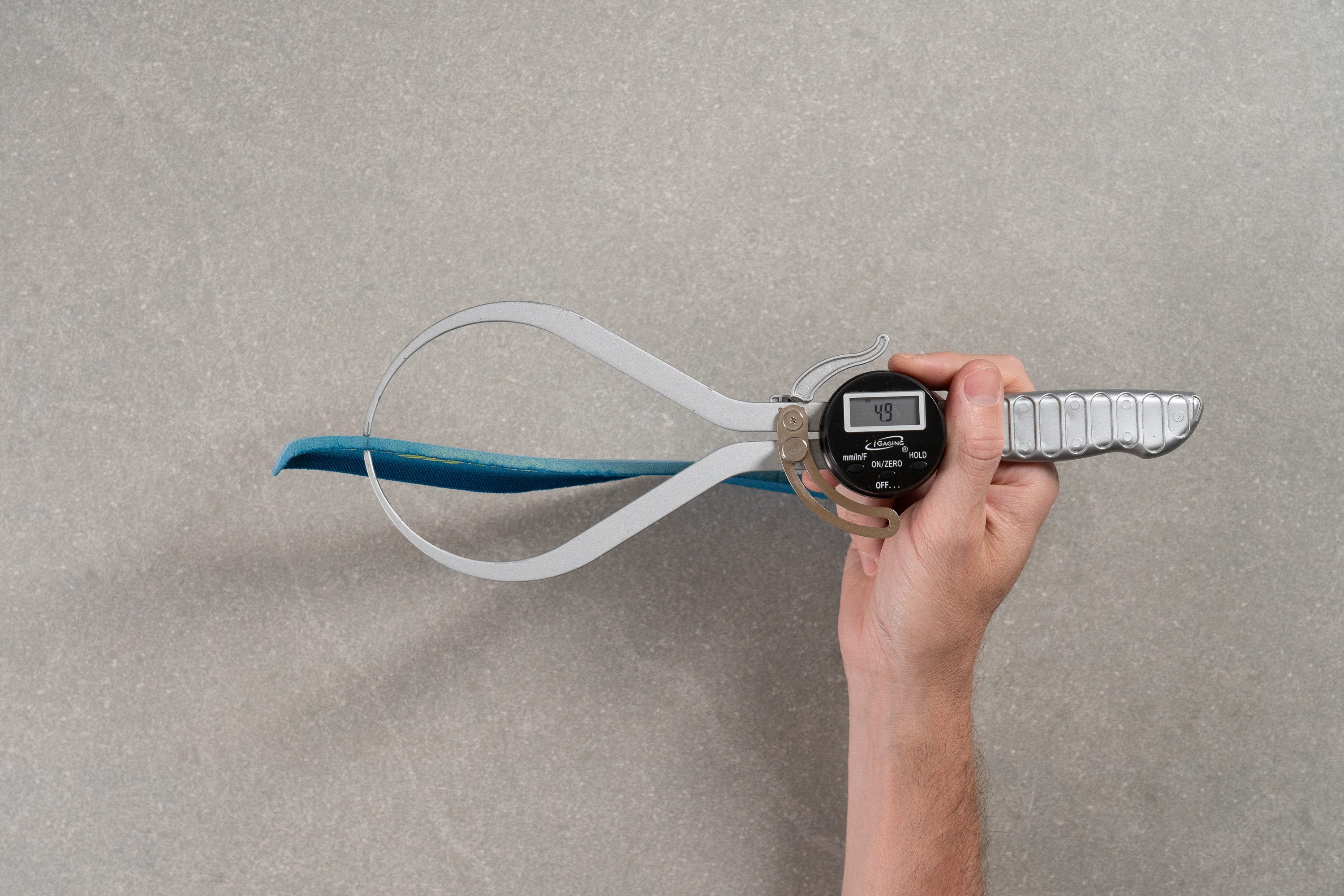
| Ultrashot 3 | 4.9 mm |
| Average | 5.1 mm |
Removable insole
But if you want a customized underfoot experience, you can easily remove and replace the shoe's stock insole with your own.
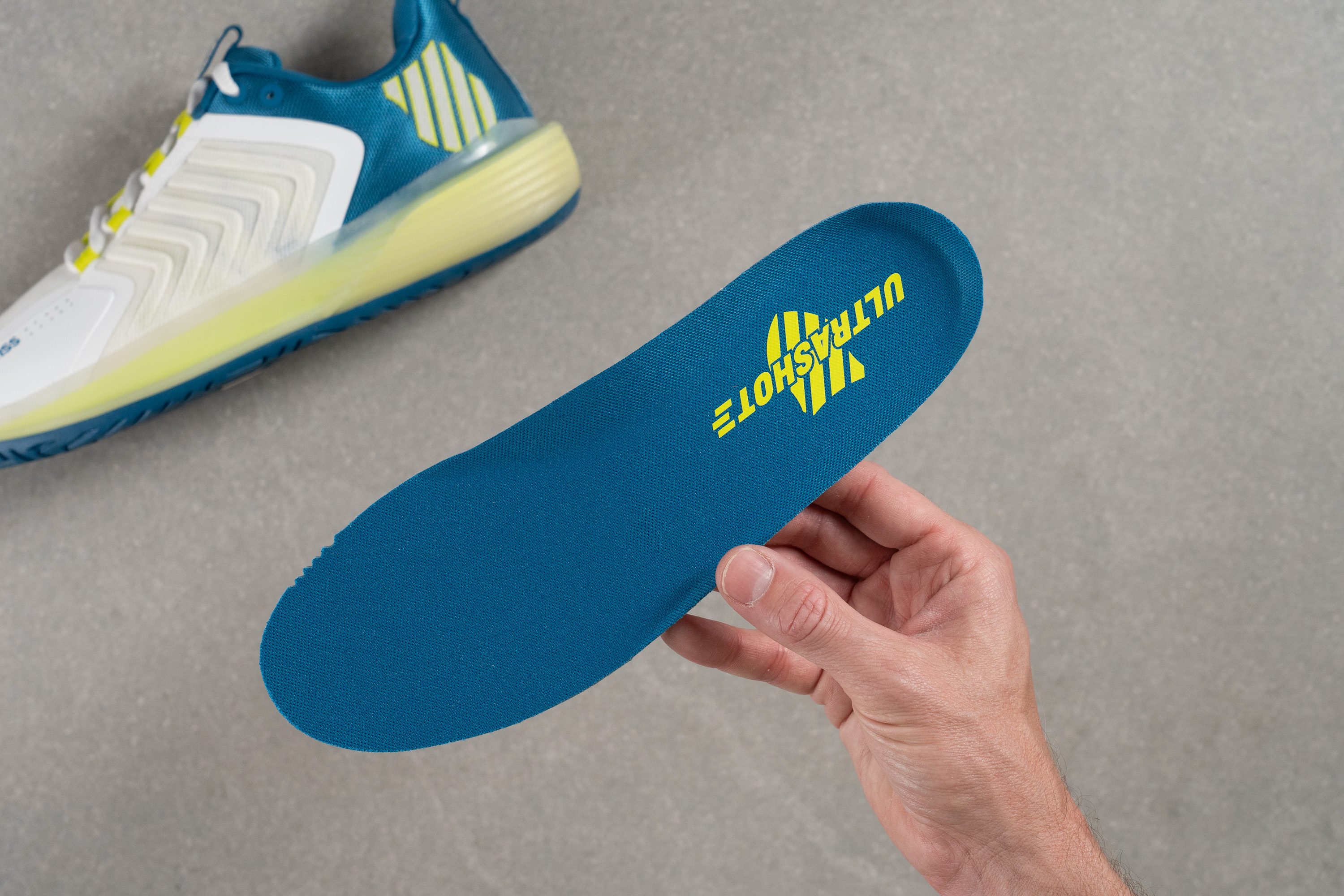
| Ultrashot 3 | Yes |
Tongue padding
Internal padding was certainly not missing in the K-Swiss Ultrashot 3. Its tongue thickness came in at 8.8 mm, and the collar packed plenty of foam as well.
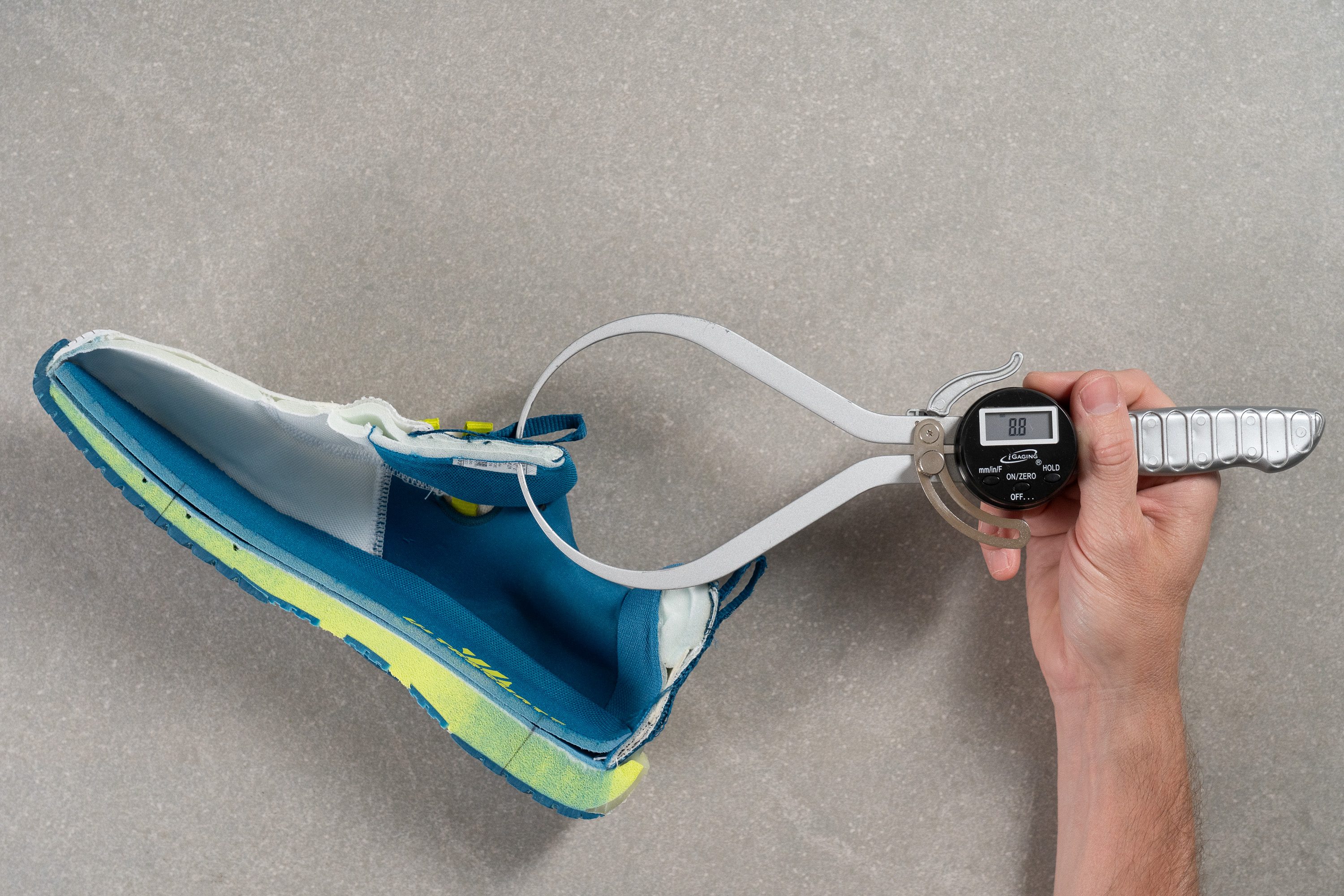
| Ultrashot 3 | 8.8 mm |
| Average | 8.1 mm |
Tongue: gusset type
A fully-gusseted tongue works well with the shoe's ribbon eyelets to create a locked-in fit with zero tongue shifting.
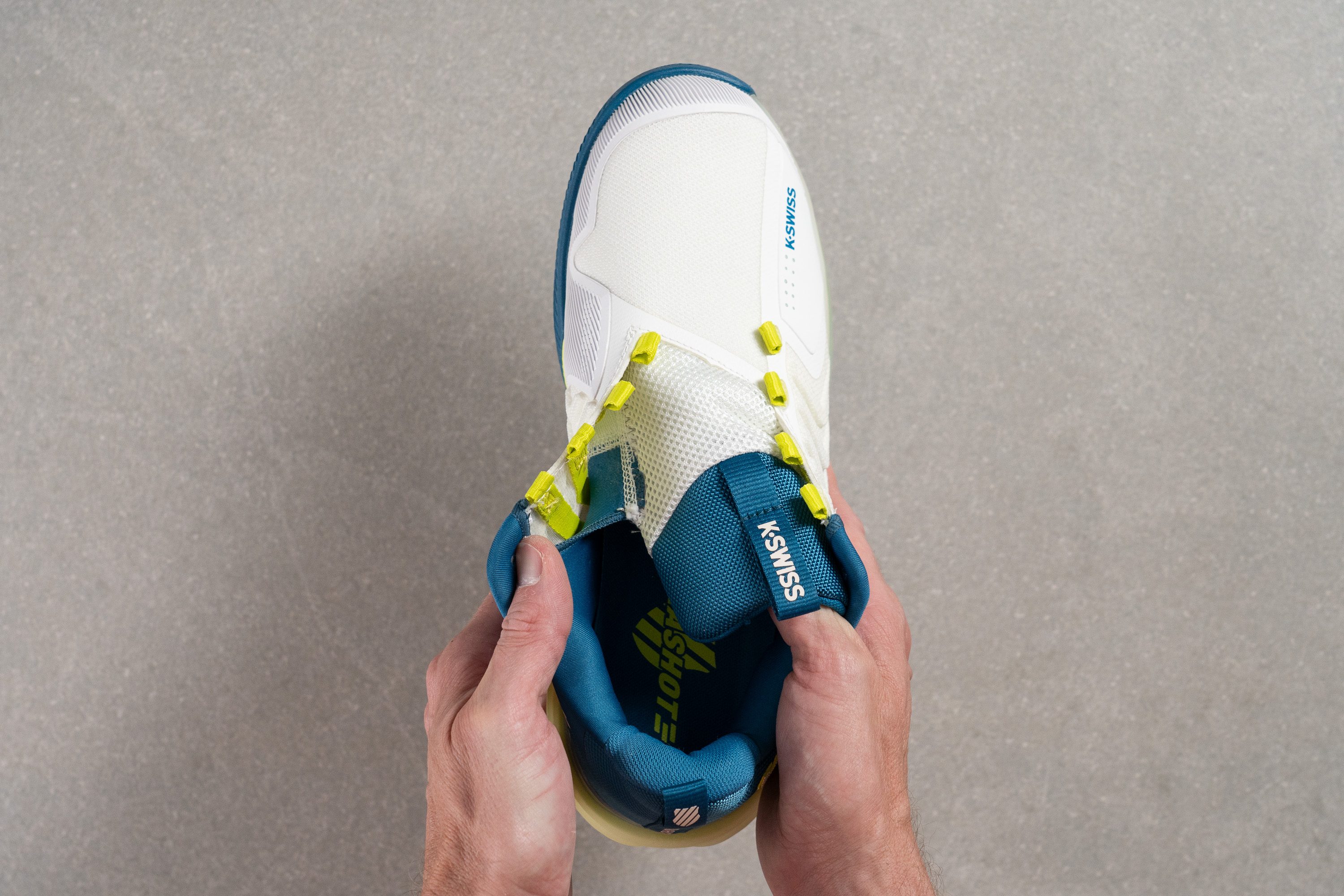
| Ultrashot 3 | Both sides (full) |
Price
The Ultrashot 3 is a premium option for advanced-level players, and it is reflected in the shoe's higher price point. And because this K-Swiss shoe ticks all the important boxes, we believe that the price is reasonable.
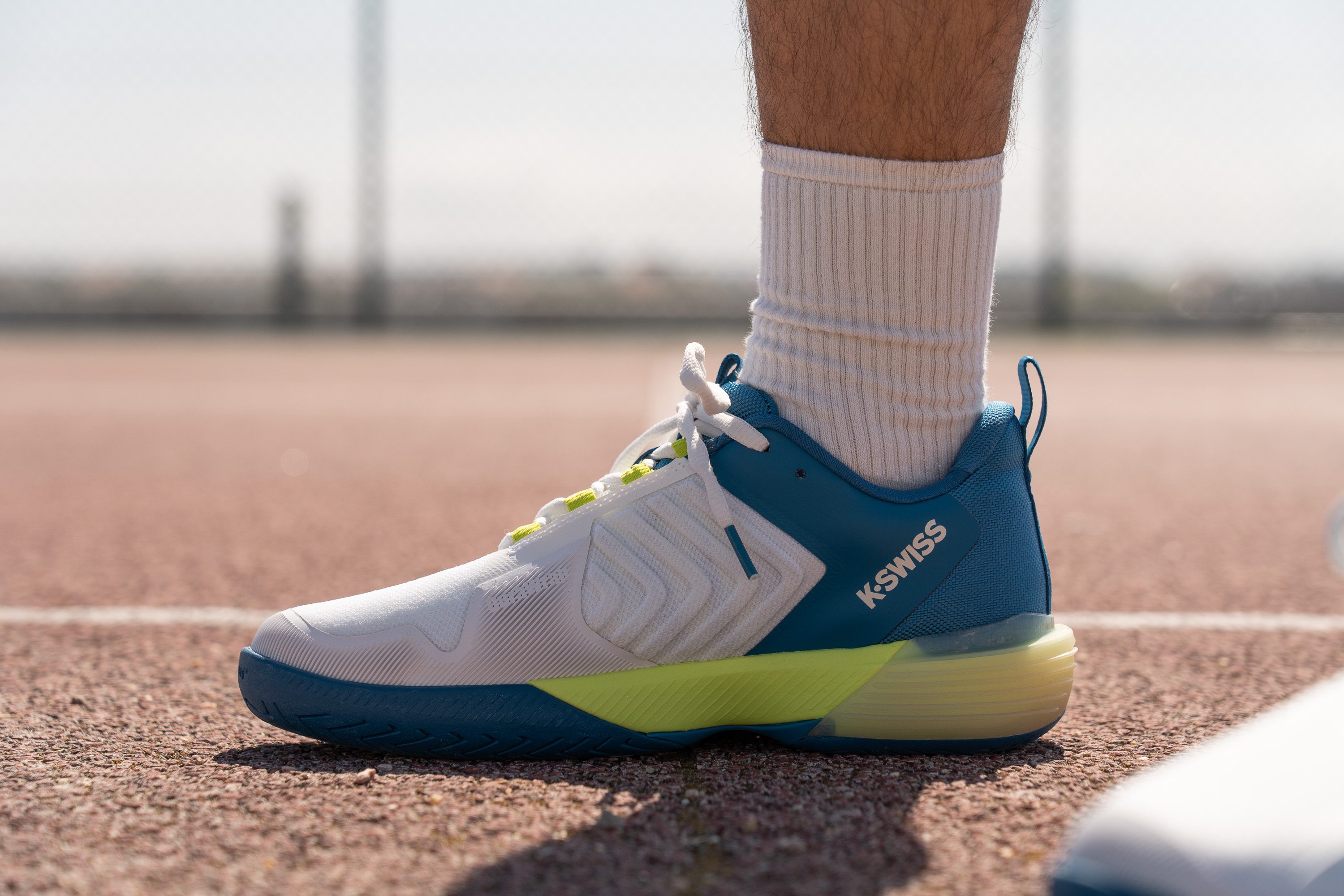
| Ultrashot 3 | $150 |
| Average | $132 |
Heel tab
A finger loop on the shoe's heel counter helps with the on and off.

| Ultrashot 3 | Finger loop |

